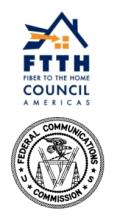LPC Residential Gig Service in Longmont Has A New Name; Available November 3rd
Big changes are happening in Longmont as the LPC builds out its network expansion. In addition to new services and new pricing, LPC for residents has a new name - NextLight. At a recent city council meeting, LPC announced that a number of residents in south central Longmont will be able to enroll for NextLight services as soon as November 3rd.
Homeowners who sign up within the first three months that service is available in their area, will get 1 Gbps symmetrical service for about $50 per month or half the regular residential price. Those customers, considered Charter Members, will keep the introductory price as long as they keep their service and will take that rate to their new home while also reserving that rate for the home they leave. The Times Call reports:
And if a homeowner does not sign up in the first three months, they could still obtain a customer loyalty price after one year, knocking the regular price down from $100 a month to $60 a month.
The city will also offer a lesser speed of 25 megabits per second for both uploading and downloading for about $40 a month and that price is not discounted for charter members or 1-year-members.
At the meeting, LPC Director Thomas Roiniotis explained the reason for the new brand:
NextLight was named with Longmont's original municipal electricity utility that the city acquired in 1912 in mind.
"What we're saying is now, today, with the same type of community support, we're building a network that uses beams of light to transmit information," Roiniotis said Monday.



